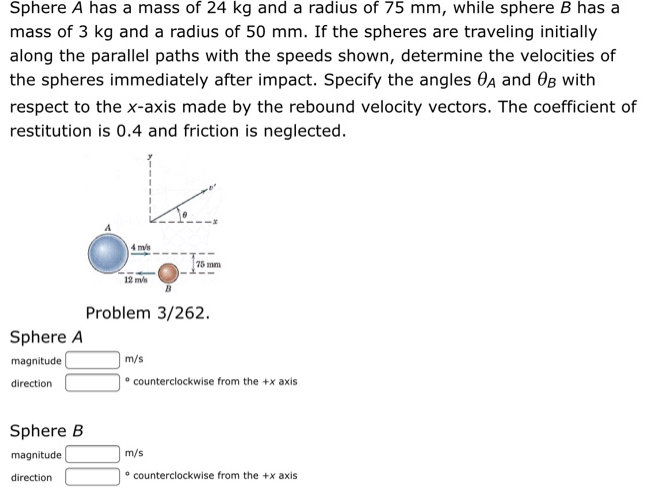Sphere A has a mass of 24 kg and a radius of 75 mm, while sphere B has a mass of 3 kg and a radius of 50 mm. If the spheres are traveling initially along the parallel paths with the speeds shown, determine the velocities of the spheres immediately after impact. Specify the angles θA and θB with respect to the x-axis made by the rebound velocity vectors. The coefficient of restitution is 0.4 and friction is neglected. Problem 3/262. Sphere A magnitude m/s direction - counterclockwise from the +x axis Sphere B magnitude m/s direction - counterclockwise from the +x axis
